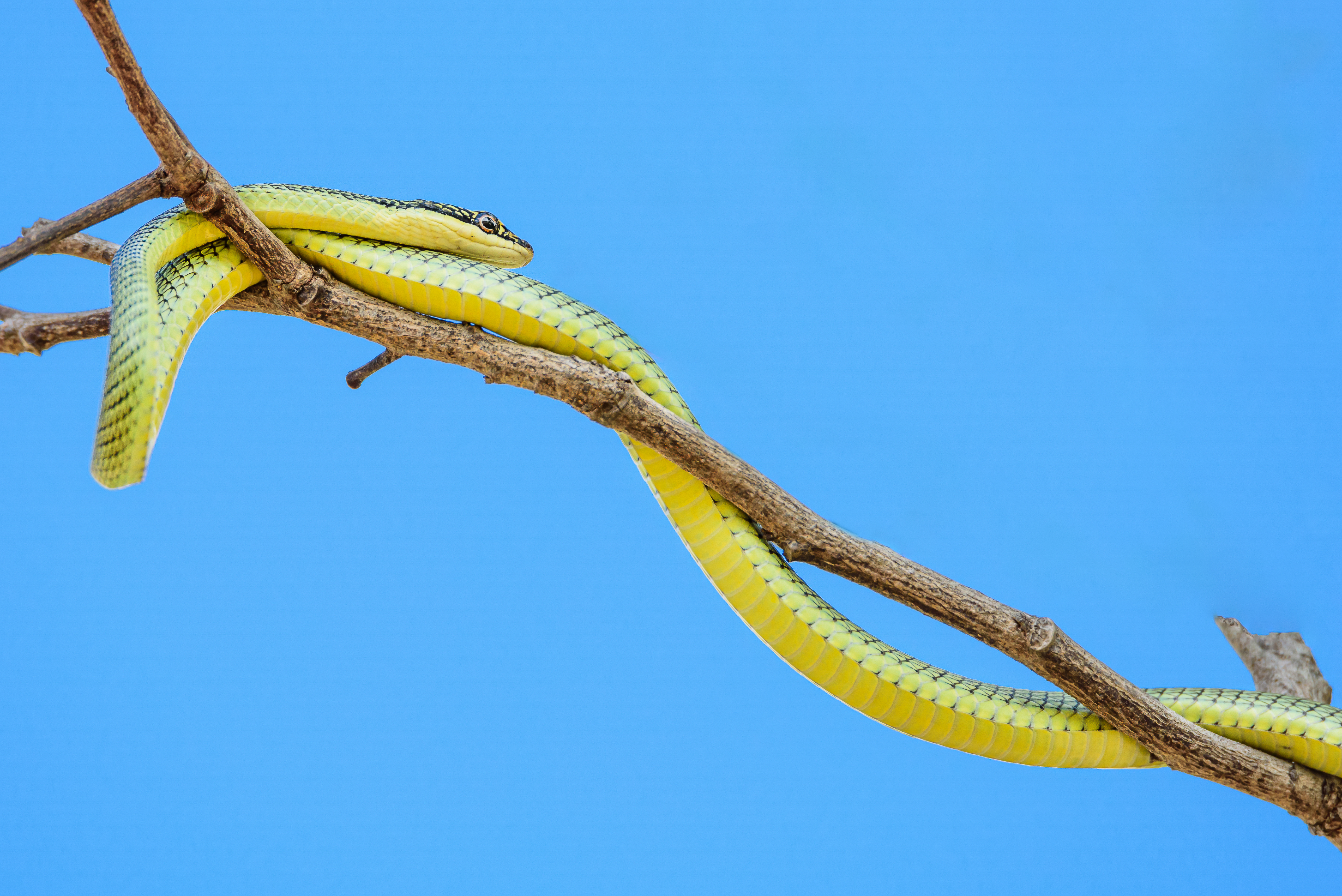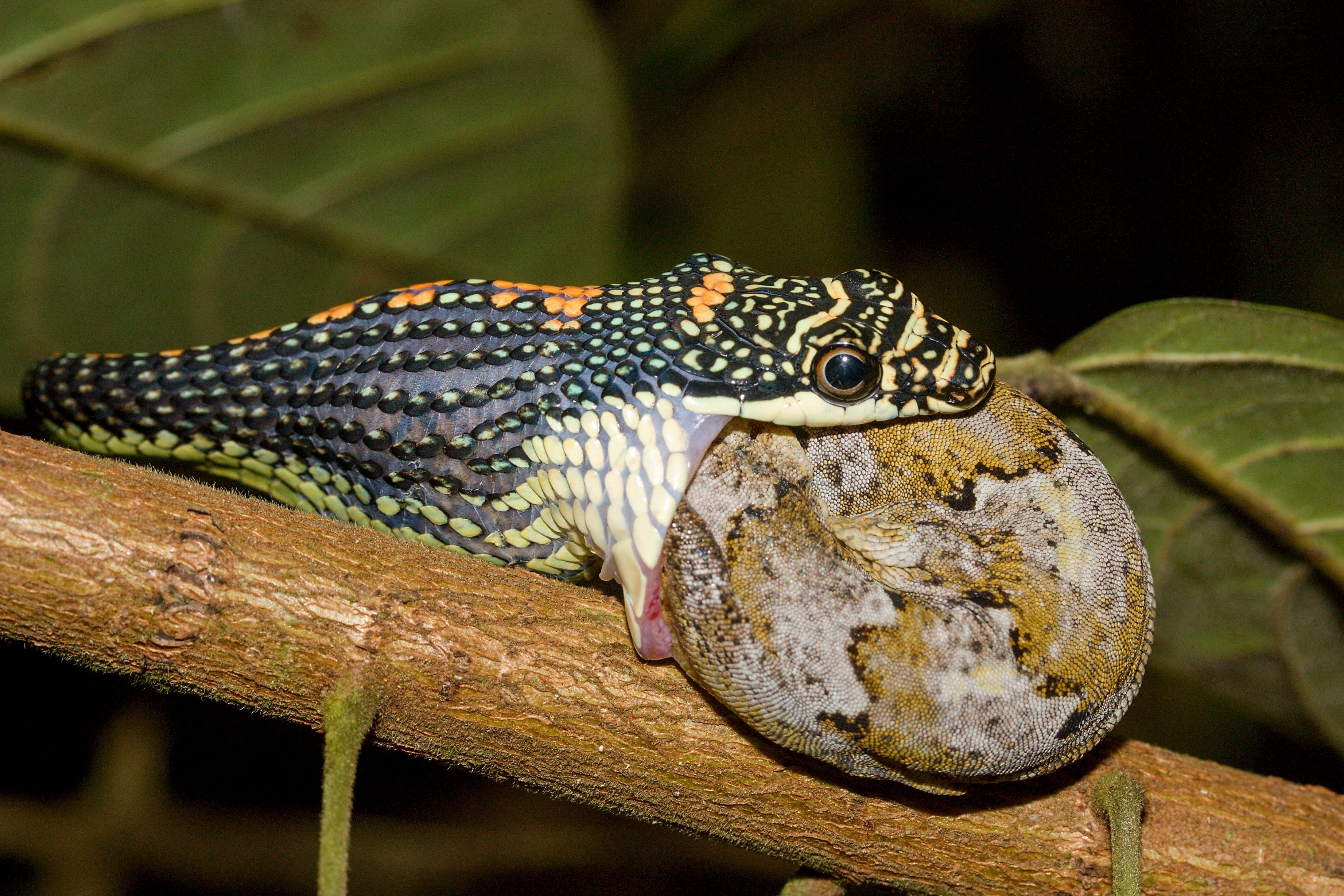Flying snake is a name used for several species (kinds) of snakes in various parts of the world. Flying snakes do not have wings and cannot fly as birds do. They use their bodies to glide over long distances. Flying snakes have a venomous, but it is only deadly to small prey.

Most flying snakes live in lowland rain forests in tropical or subtropical regions. They mainly live in trees, but sometimes live in bushes or thick vegetation on the ground. They may also be found near forests in plantations, rural villages, gardens, and even the attics of old houses.
There are five species of flying snakes, most of which are native to Southeast Asia. The paradise tree snake lives throughout India, Indonesia, Malaysia, Myanmar, the Philippines, Singapore, and Thailand. The twin-barred tree snake, also called the banded tree snake, lives in Brunei, Indonesia, Malaysia, Singapore, and Thailand. The golden tree snake lives in Bangladesh, Cambodia, China, India, Laos, Malaysia, Nepal, the Philippines, Sri Lanka, Thailand, and Vietnam. Little is known about the Moluccan flying snake, native to Indonesia, or the Sri Lankan flying snake, native to Sri Lanka.
Flying snakes are green, black, or dark gray. Some also have yellow scales, orange or red markings, or black bars. They are small snakes, measuring 2 to 4 feet (0.6 to 1.2 meters) in length. For example, the smallest and rarest species, the twin-barred tree snake, can grow up to about 2 feet (0.6 meter) in length. The paradise tree snake only grows to about 3 feet (0.9 meter) long, and the golden tree snake can grow as long as 4 feet (1.2 meters). Flying snakes can weigh from about 16 to 35 ounces (450 to 1,000 grams).
A flying snake’s body is adapted to climb up trees and glide off the branches. The scales on its belly help it to grip tree bark to move along trunks and branches. To “fly,” the snake perches on the edge of a branch, with most of its body hanging in a J shape. It then angles its body in the direction it wants to glide and takes off by jumping up and away from the branch. To glide, the snake flattens its underside, which doubles in width and becomes slightly concave (inward curving). The snake also curves its body into a wide S shape. The snake can adjust its flight by moving its head and wriggling its body from side to side. It can soften its landing by lowering its tail before impact.
Scientists think flying snakes glide to move between trees, chase prey, and avoid predators. Flying snakes can glide as well as other gliding animals, including flying squirrels. Flying snakes are fast, gliding about 26 to 33 feet (8 to 10 meters) per second. They can travel more than 300 feet (90 meters) in a single glide. Smaller flying snakes can glide farther than larger ones can.
Female flying snakes lay eggs in trees. The flying snake is diurnal, hunting during the day. It mainly preys on lizards, though it also sometimes hunts birds and bats. The flying snake kills its prey with venom, then swallows it whole.

